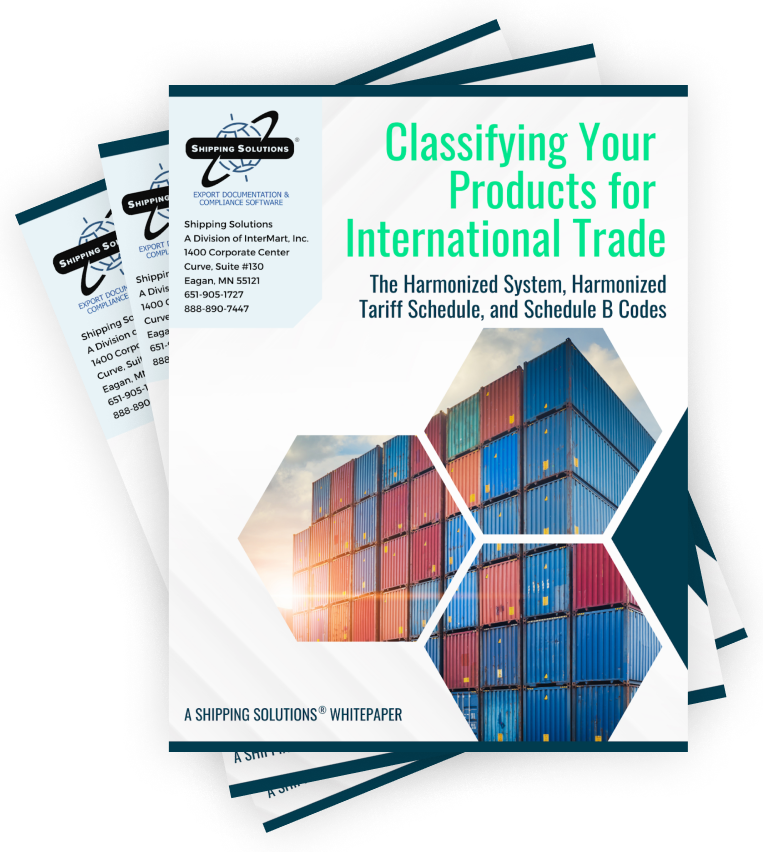The International Trade Blog Import Procedures
How to Classify Your Products for Import and Export
On: January 20, 2021 | By:  David Noah |
4 min. read
David Noah |
4 min. read
 Understanding product classification is a necessary and important part of a successful importer and exporter’s toolkit. Unfortunately, it’s also a complicated, and therefore misunderstood, aspect of international trade. Companies may be quick to rush through classification and make mistakes. Improper classifications may trigger audits, long delays in shipping and substantial financial penalties, so it’s important to do correctly!
Understanding product classification is a necessary and important part of a successful importer and exporter’s toolkit. Unfortunately, it’s also a complicated, and therefore misunderstood, aspect of international trade. Companies may be quick to rush through classification and make mistakes. Improper classifications may trigger audits, long delays in shipping and substantial financial penalties, so it’s important to do correctly!
This article will help clarify this often-muddled topic by summarizing some of the key points discussed by Robert P. Imbriani in his free webinar, Classifying Your Products for Importing and Exporting.
History of the Harmonized System
Before the 1960s, no unified global tariff system existed, and individual countries had unique tariffs. In the U.S., we had the Tariff Schedule of the U.S. (called the Schedule A) as well as the Schedule B.
In the 1970s, in order to facilitate trade agreements and compare statistical information, an international group called the Customs Cooperation Council began working toward harmonizing tariff schedules, ultimately landing on what was called the Harmonized System—a system that was consistent to a certain level, but one that also left flexibility for individual countries to monitor goods as they saw fit. In 1988, the U.S. adopted the Harmonized System. Today, the Harmonized System is administered by the World Customs Organization.
Purpose of the Harmonized System
The Harmonized System (HS) classification is an internationally recognized, “core” system that provides uniformity for the classification of internationally traded goods. The Harmonized System classification, called HS codes or HS numbers, consists of a 10-digit numbering system, of which the first six digits are “harmonized” between all the countries who use the system. Under the HS, countries are obligated to adhere to all headings and subheadings without addition or modification. Learn more about these codes in our comprehensive resource for all exporters: Export Procedures and Documentation: An In-Depth Guide.
The last two sets of numbers are country-specific and may or may not be used as part of a country's harmonized system. In the U.S., these last four numbers are identified as either the Harmonized Tariff Schedule (HTS) of the U.S. or the Schedule B.
The Difference between HTS and Schedule B
The United States uses both the HTS as well as a harmonized Schedule B. These two versions of the harmonized system are specific to importing and exporting and allow for flexibility in the level of detail used.
- The HTS must be used to classify all imports and for classifying products, goods and materials to determine eligibility for trade agreements. The HTS may also be used for exports but may need to be supplemented by the Schedule B.
- The Schedule B is used only for exports; it is used to determine the proper harmonized number for filing Electronic Export Information (EEI). If you only export, you may elect to use Schedule B.
Learn More: HS Codes, HTS Codes, and Schedule B Codes: What's the Difference?
Product Classification Basics
Product classification exists to resolve two problems:
- Identification of the article in simple terms.
- Identification of the article for tariff purposes.
To classify products under the General Rules of Interpretation (GRI), section, chapter, subheading notes and the terms of the headings and subheadings are to be applied. These are the “legal text” of the HS (or “nomenclature”). Chapter and section titles have no legal significance.
General Rules of Interpretation
There are six universal General Rules of Interpretation and one U.S.-specific rule. These rules are contained in the beginning of the HS and Schedule B; the rules are the same for both. These rules are important because they create a hierarchy of classification, as they are harmonized throughout the World Trade Organization. You can learn more about the GRIs in our article, Doing It by the Book: Classifying Your Goods for International Trade.
7 Best Practices for Classifying Your Products.
- Know your product(s).
- Make sure your internal controls over classification are in writing. These written procedures should be codified for both exports and imports.
- Create a classification team, which should include your company’s technical support. You need to know who you go to for support both within your organization and outside of it.
- Consult with outside experts, such as your freight forwarding company, customs broker and consultant.
- Maintain a database of classifications to ensure your organization is consistent with classification, and check your classifications regularly for updates.
- Provide periodic training to your staff.
- Request rulings through a Binding Ruling when in doubt. U.S. Customs and Border Protection (CBP) offers classification assistance in the form of binding rulings, which you can request online through a formal process called Customs Rulings Online Search System (CROSS). These CROSS rulings are published on the CBP website.
One of Our Best Resources for Understanding Product Classification
Our free webinar, Classifying Your Products for Importing and Exporting, is a great starting point for anyone in your company who engages in international trade, from purchasing agents to sales reps, logistics personnel and even your company’s legal team. In it, you’ll learn:
- How the Harmonized System operates.
- When to use the Harmonized Tariff Schedule or the Schedule B.
- How to use the General Rules of Interpretation, General Notes and Trade Preference Provisions to correctly classify your imports for advantageous duty rates while avoiding fines and other regulatory compliance problems.
- How product modification, trade agreements and preference programs can reduce duty paid.
- How to obtain a classification ruling from U.S. Customs and Border Protection or other government agencies.
- What tools are out there to assist with your classification process.
Click below to watch the webinar now—and move toward clarity and confidence in using the various classification systems used globally and in the United States.
Like what you read? Join thousands of exporters and importers who subscribe to Passages: The International Trade Blog. You'll get the latest news and tips for exporters and importers delivered right to your inbox.

About the Author: David Noah
As president of Shipping Solutions, I've helped thousands of exporters more efficiently create accurate export documents and stay compliant with import-export regulations. Our Shipping Solutions software eliminates redundant data entry, which allows you to create your export paperwork up to five-times faster than using templates and reduces the chances of making the types of errors that could slow down your shipments and make it more difficult to get paid. I frequently write and speak on export documentation, regulations and compliance issues.


